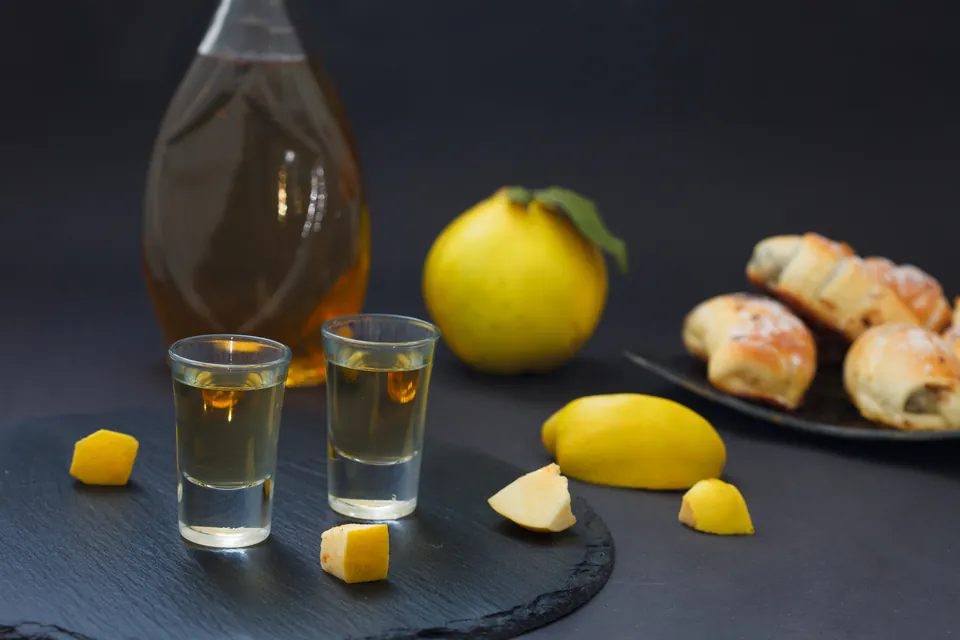Understanding Hungarian Pálinka in Budapest
Walk into any bar or restaurant in Budapest and you'll probably see pálinka. This clear, fiery fruit brandy is everywhere in Hungarian culture. It's not just another drink. Pálinka is basically liquid Hungarian pride, made only from fruits grown in Hungary.
We discovered this the hard way during our first Budapest visit when we thought pálinka was just another tourist thing. One sip changed everything. This stuff is the real deal, protected by EU law since 2004. You can't call it pálinka unless it's made in Hungary (except for a few spots in Austria). It's like champagne, but with more kick and way more history.
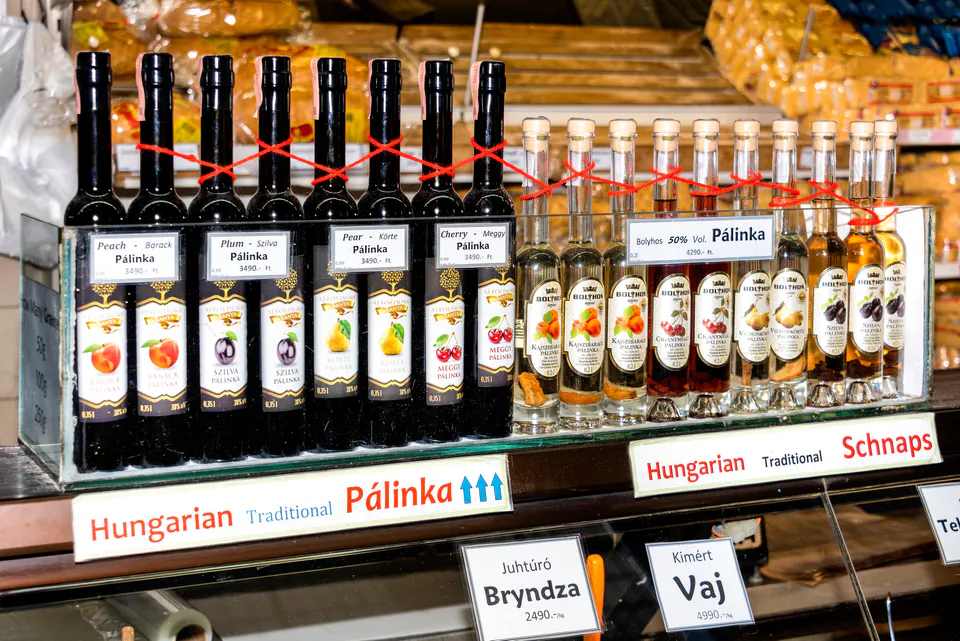
How Pálinka Became Hungary's National Spirit
This whole thing started way back in the 14th century. Court records mention something called "aqua vitae reginae Hungariae," which was basically rosemary-flavored medicine for Queen Elizabeth of Hungary. Pretty fancy start for what became the people's drink.
The journey from royal medicine to everyone's favorite spirit tells you a lot about Hungary. When the Austro-Hungarian Empire started taxing the hell out of it, families went underground. They'd secretly distill fallen fruit in hidden cellars. We love this rebellious spirit (pun intended). Even during communist times, when using food for alcohol was frowned upon, Hungarians kept making their beloved brandy.
Things got official in 2008 with the Pálinka Act, which set strict rules for production. The EU gave it Protected Designation of Origin status too. Now what used to be rustic peasant brandy is served in Budapest's best restaurants. We think that's pretty cool.
How They Make This Stuff
Making pálinka starts with Hungarian fruits. Plums from Szatmár, apricots from Kecskemét, cherries from Újfehértó. Each region grows different fruits that taste different because of the soil and weather. The whole process has four main steps that turn ripe fruit into this amazing spirit.
First, they crush the fruit carefully and remove stones from stone fruits. This is important because stones can create dangerous cyanide. The mashed fruit sits for 10 to 15 days while natural yeasts turn the fruit sugars into alcohol. Pretty basic but it works.
The magic happens during distillation. They use small copper pot stills called "kisüsti" and distill twice. These copper pots, often passed down through families, add subtle flavors while cleaning out bad stuff. Master distillers carefully separate the good parts from the junk, so only the best spirit makes it to bottles.
Some pálinkas age in wooden barrels too. "Érlelt" pálinkas age for at least three months, while "ó" pálinkas sit for twelve months or more. Special "ágyas" varieties age with extra fruit in the barrel, creating super intense flavors that really capture Hungarian orchards.
All the Different Types You Can Try
Budapest has tons of pálinka flavors. Szilvapálinka (plum) is the king, with varieties like Szatmári and Békési having official protected status. These are deep, earthy spirits with complex flavors that range from sweet stone fruit to subtle spice.
Barackpálinka (apricot) is probably the most famous type. Kecskeméti barackpálinka is legendary among people who really know their stuff. This fragrant, marzipan-flavored spirit captures summer in a bottle and is great for beginners.
Cherry types split between sweet cseresznyepálinka and tart meggypálinka. Újfehértói meggypálinka has PDO recognition too. These red spirits burst with fruit flavor and often have hints of almond from the cherry stones used in traditional production.
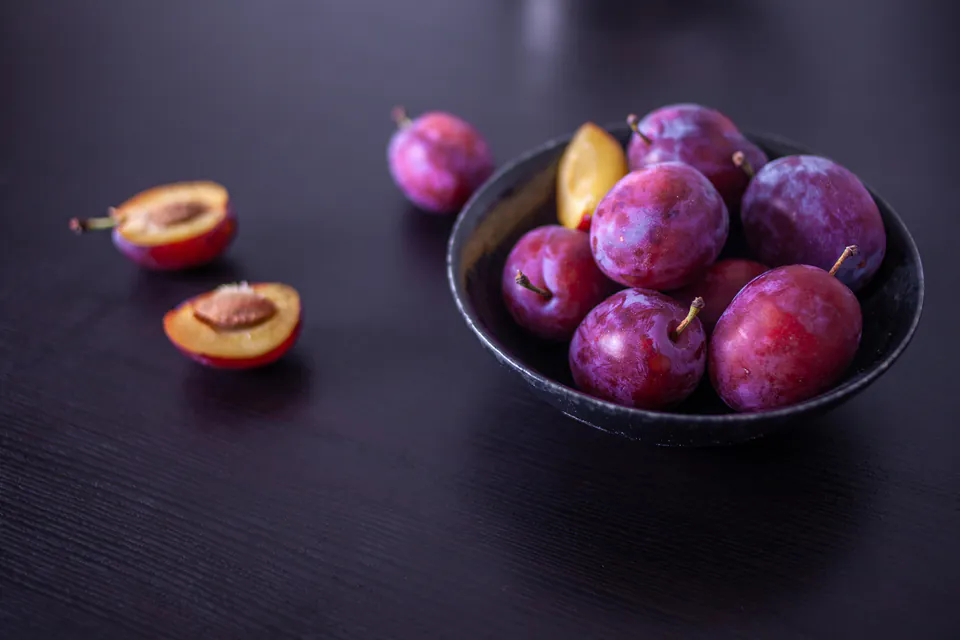
Almapálinka (apple) from the Szabolcs region has crisp, clean flavors that remind you of autumn orchards. Körtepálinka (pear) is delicate and floral. More unusual types include birspálinka (quince) with its intense perfume, and rare spirits made from mulberries, chestnuts, or walnuts.
Törkölypálinka comes from grape leftovers after winemaking. It's Hungary's version of Italian grappa. This rustic spirit, especially from the Pannonhalma region, has earthy intensity and goes great with hearty Hungarian food.
Popular Pálinka Varieties in Budapest
| Pálinka Type | Base Fruit | Flavor Profile | Notable Region |
|---|---|---|---|
| Szilvapálinka | Plum | Deep, earthy sweetness with stone fruit notes | Szatmár, Békés |
| Barackpálinka | Apricot | Fragrant, marzipan-tinged, summer fruit | Kecskemét, Gönc |
| Meggypálinka | Sour Cherry | Tart cherry with almond aftertaste | Újfehértó |
| Almapálinka | Apple | Crisp, clean, autumn orchard | Szabolcs |
| Körtepálinka | Pear | Delicate, floral, subtly sweet | Göcsej |
| Törkölypálinka | Grape Pomace | Rustic, earthy, wine-like | Pannonhalma |
Best Places to Try Pálinka in Budapest
Budapest has tons of great spots to try authentic pálinka. Szimpla Kert, the original ruin pub, has an impressive pálinka selection alongside all its crazy décor and live music. We always recommend starting here because you get the full Budapest experience while trying plum or apricot pálinka.
The Pálinka Museum on Király Street is perfect for learning everything about this spirit. It's a museum, shop, and tasting room all in one. Interactive exhibits show you the history and how it's made, while guided tastings let you try everything from traditional plum to exotic raspberry. The staff really knows their stuff and will teach you proper tasting techniques.

Magyar Pálinka Háza (Hungarian Pálinka House) works as both specialty shop and exhibition space. The expert staff give personalized recommendations and host tastings that explore regional differences and production methods. It's perfect for asking questions and finding your preferred style before buying bottles to take home.
Traditional restaurants throughout Budapest have curated pálinka selections to go with their food. Fülemüle, a cozy family-run Jewish restaurant, has kosher pálinka alongside traditional dishes. Central Café and Restaurant pairs its famous desserts with carefully selected fruit brandies. Nagy Fa-Tál Kitchen shows off several pálinka flavors alongside authentic Hungarian food.
Modern cocktail bars have started using pálinka in creative cocktails. Places like Tuk Tuk Bar make "Pálinka Sours" that blend traditional spirits with modern mixology. These new approaches introduce pálinka to new people while respecting its traditional character.
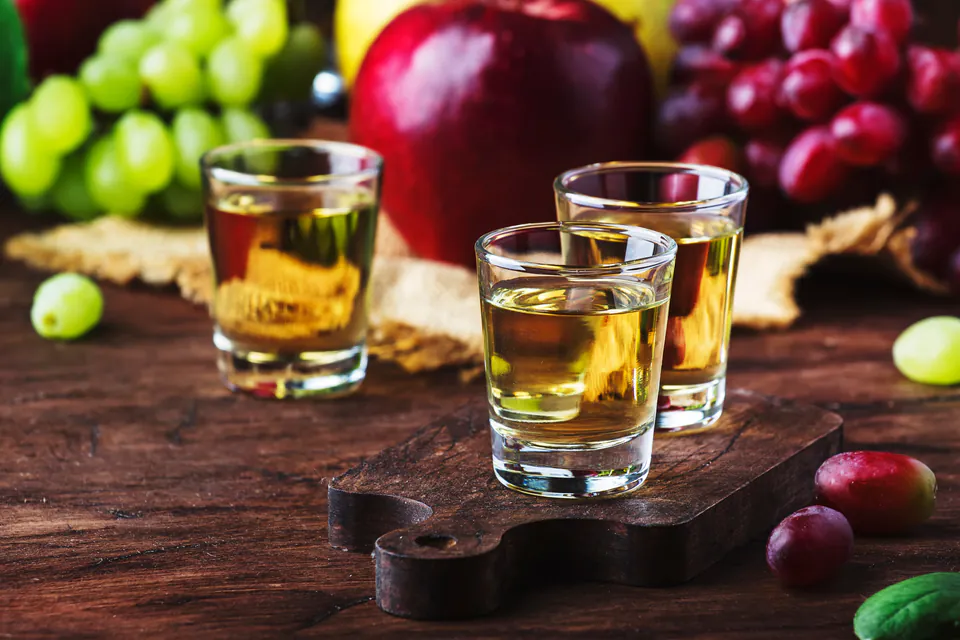
How to Drink Pálinka the Right Way
Drinking pálinka properly means understanding Hungarian customs around this special spirit. Real pálinka should be served at room temperature (18-20°C) in tulip-shaped glasses that push the fruit smells toward your nose. The wider bottom and narrower rim make the perfect vessel for appreciating the complex smell that makes quality pálinka different from harsh knockoffs.
The traditional way emphasizes slow sipping rather than quick shots. This lets the flavors develop gradually on your tongue. Take a moment to swirl the glass gently and smell the rich fruit scents before taking your first small sip. Let the spirit coat your tongue and try to identify the base fruit and any subtle notes from aging or production methods.
Pálinka works as both appetizer and after-dinner drink in Hungarian dining culture. Many restaurants give you a welcoming shot when you arrive. This is Hungarian hospitality and you shouldn't refuse it. The high alcohol content (typically 40-50% ABV) helps digestion, making it perfect after heavy Hungarian meals.
When toasting, raise your glass and say "Egészségedre!" (pronounced egg-esh-sheg-uh-dreh), meaning "To your health!" Make eye contact while clinking glasses. This European tradition shows respect and friendship. This simple gesture turns pálinka drinking from just having a drink into a cultural exchange.

Organized Pálinka Tours and Tastings
Budapest has several structured experiences for people who want to learn more about pálinka. The Pálinka Museum gives guided tours that explain the spirit's history and production process, with tastings featuring 3-8 different varieties with expert commentary. These educational sessions help visitors understand the subtle differences between regional styles and production methods.
Some pub crawls include pálinka museum visits as part of their route, combining education with Budapest's crazy nightlife scene. These tours introduce people to pálinka culture while exploring the city's famous drinking spots.
For the ultimate experience, consider going to Zugfözde Pálinka Museum in nearby Visegrád, where guided distillery tours show the production process up close. Visitors see traditional copper pot distillation while sampling award-winning spirits paired with traditional Hungarian snacks.
Several restaurants have pálinka flights or tasting menus that pair different varieties with complementary foods. Doblo Wine Bar, while mainly focused on wine, has pálinka flights showing local varieties alongside expert guidance on proper appreciation techniques.
Where to Buy Real Pálinka
Budapest's specialty shops have the best selection and authenticity for pálinka purchases. The Pálinka Museum shop stocks many varieties featured in their tastings, often at reasonable prices and with the advantage of knowing what you enjoyed. Magyar Pálinka Háza gives expert guidance for selecting bottles based on personal preferences and gift-giving needs.
The Great Market Hall on Fővám Square has tourist-friendly pálinka shopping alongside other Hungarian specialties. While prices may be higher than local shops, the convenience and variety make it great for souvenir hunting. Look for gift sets with mini bottles of different varieties. Perfect for sharing Hungarian culture with friends back home.
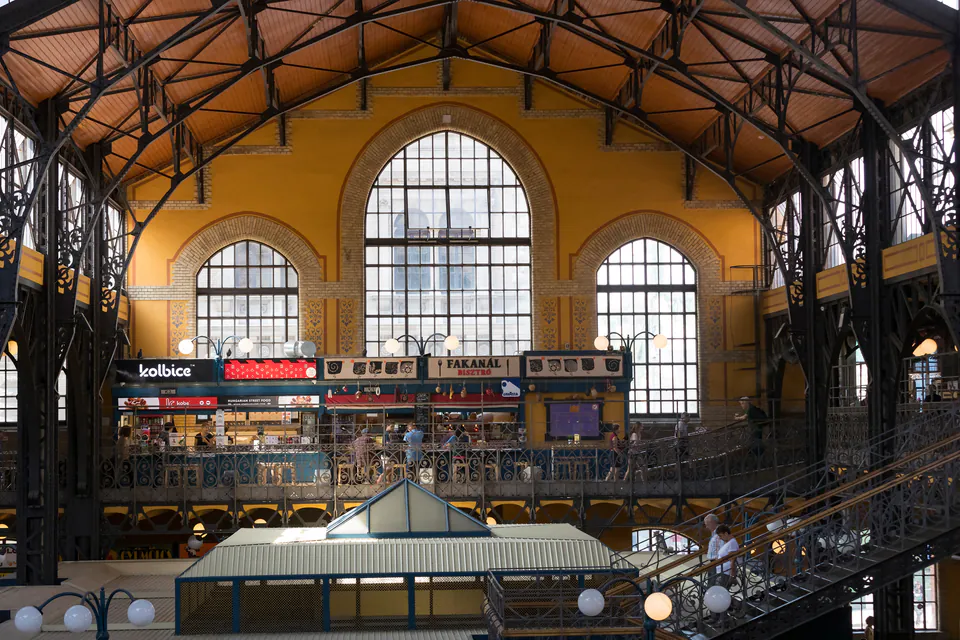
When buying pálinka, look for reputable brands like Panyolai, Bestillo, Agárdi, or Zwack's Kosher line. These producers focus on traditional methods and real fruit, ensuring smooth, flavorful spirits worth savoring. Avoid brands you don't recognize in plastic bottles. Quality pálinka deserves proper glass packaging.
For international travel, remember that pálinka bottles must go in checked luggage unless bought duty-free after security. Most countries allow one liter of spirits duty-free per adult, making a standard 0.5L or 0.7L bottle of pálinka a perfect souvenir. Always check your home country's customs rules before buying multiple bottles.
How Different Regions Shape Budapest's Pálinka Scene
While Budapest shows off pálinka, the spirit's character comes from Hungary's diverse fruit-growing regions. Eight officially recognized areas have Protected Designation of Origin status, each contributing unique characteristics based on local soil, weather, and traditional methods.
Szatmár region plum pálinka, produced by distilleries like Panyolai Szilvórium (one of Hungary's oldest), represents the gold standard for szilvapálinka. The area's specific climate and soil create plums with ideal sugar content and flavor complexity.
Kecskemét has legendary status for apricot pálinka, with local varieties achieving perfect balance between sweetness and intensity. The sandy soil and continental climate create apricots that distill into exceptionally aromatic spirits.
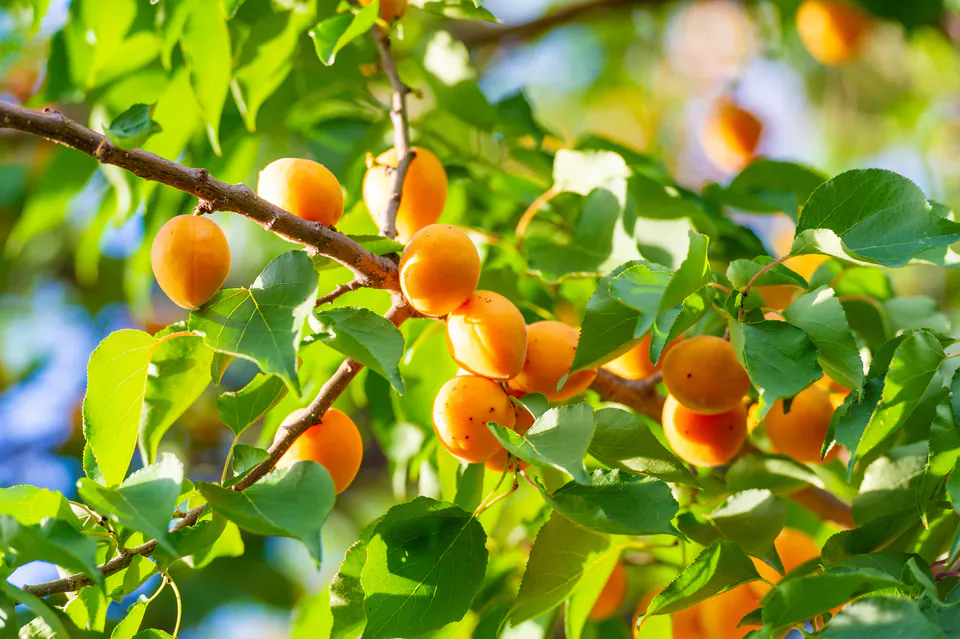
Agárdi Distillery, located near Lake Velence, has gained international recognition for premium fruit brandies, winning numerous awards for innovation while respecting traditional methods. Békési Pálinkafőzde holds the distinction of being Hungary's first private distillery, specializing in plum and apricot varieties from the fertile Békés region.
Budapest's establishments proudly feature pálinkas from these renowned regional producers. Each bottle tells the story of where it comes from, from the volcanic soils of Tokaj to the sandy plains of the Great Hungarian Plain.
Modern Pálinka Culture
Modern Budapest has embraced pálinka while respecting its traditional roots. The 2010 legalization of home distilling (with quantity limits for personal use) reflects continued passion for crafting and enjoying pálinka at the family level. This legal recognition acknowledges the deep cultural connection Hungarians maintain with their national spirit.
We've noticed that contemporary bartenders experiment with pálinka cocktails, showing the spirit's versatility beyond traditional neat consumption. These new approaches introduce international visitors to pálinka while creating new appreciation among younger Hungarians who might otherwise overlook traditional spirits.
The annual Budapest Pálinka and Sausage Festival celebrates the spirit alongside traditional Hungarian charcuterie, showing pálinka's important role in Hungarian food culture. These events bring together master distillers, food artisans, and enthusiasts in celebration of Hungarian traditions.
Quality standards keep rising as producers compete for recognition in domestic and international markets. Modern pálinka represents the perfect marriage of ancient traditions and contemporary quality control, ensuring each bottle meets the exact standards that protect this cherished Hungarian heritage.
